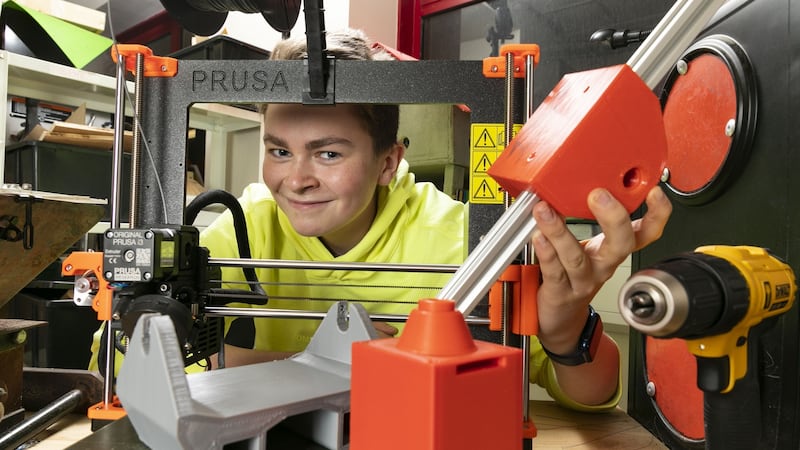Growing concerns about sports-related head injuries, especially heading the ball in soccer, has led two Co Cork students to design a headband that measures the impacts during matches.
The device "doesn't interfere with a player's ability to head the ball", according to Sophie Creedon of St Mary's Secondary School Mallow, who developed it with classmate Lydia Kelleher.
They pursued their project in light of evidence that heading footballs can cause cognitive damage and they hope that it will be used to modify training programmes, Lydia said.
Tests were carried out in the laboratory and on younger players – the ones most at risk, say the duo – and they hope it will be useful for doctors and coaches involved in setting rules for those players.
With huge backlogs in cancer treatment, and what he understood was a 14 per cent reduction in diagnosis of breast cancer in Ireland during Covid-19, Stephen Flynn of St Joseph's Secondary School in Rush, Co Dublin, attempted to find a solution to ease waiting times.
He deployed artificial intelligence (AI) to assist image classification of breast cancer in X-rays and mammograms with a view to faster screening and detection.
Breast cancer
His Sláinte classification model, he pointed out, is effective with metastatic breast cancer, the most common form. While his initial model had some limitations because of lack of accuracy, when his approach was applied to histopathology slides and images taken in biopsies, images were clearer with proven accuracy on detection. Moreover, Stephen confirmed its ability to process many thousands of images quickly using his software.
Because using AI in such circumstances is in his view largely confined to “individual side projects” or companies evaluating the possibilities in closed circumstances, he has made Sláinte “open source”. So its source code is being made freely available for possible modification and redistribution in the hope that his software tool will be further enhanced – and, ultimately, widely deployed.
Another notable invention featuring in the BT Young Scientist & Technology Exhibition is a cardiopulmonary resuscitation device; the brainchild of Jim and Paula-Eve Culhane, who attend Tarbert Comprehensive School in Co Kerry.
It is designed to overcome “rescue fatigue” when delivering standard chest compressions for someone who has had a heart attack and cannot breathe – especially when waiting for emergency services to arrive.
Cheaply made
Their “lever and piston design” includes manual peddles that deliver chest compressions consistently in an attempt to maintain oxygen to the brain “to required depth without any power source”. As it can be cheaply made, Jim noted, they believe it is particularly suitable for use in developing countries with limited health services.

Harry O'Connor of Cork Educate Together spent 10 months designing and developing a bipedal robot for use in home-care settings. His motivation, he said, was seeing older people and those with special needs at home alone during Covid.
“I couldn’t understand why they wasn’t even a simple robot to help them.” But “the world is full of people with legs, not robots run on wheels”, so he attempted to build a bipedal robot at an affordable price that could be deployed in homes.
A key priority was that it be adaptable to its surroundings, especially in being able to walk on uneven ground. Using artificial intelligence combined with a machine learning program that obstacle was overcome, he confirmed.













